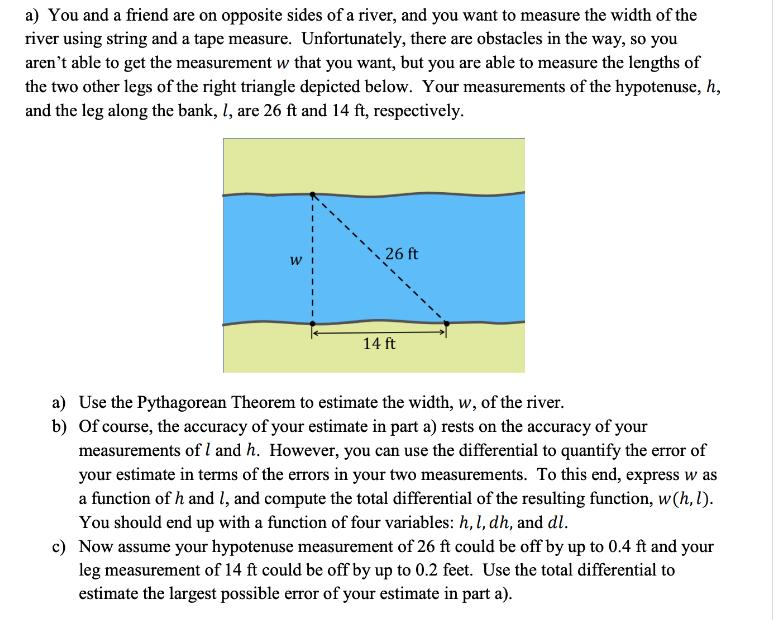Answered step by step
Verified Expert Solution
Question
1 Approved Answer
a) You and a friend are on opposite sides of a river, and you want to measure the width of the river using string

a) You and a friend are on opposite sides of a river, and you want to measure the width of the river using string and a tape measure. Unfortunately, there are obstacles in the way, so you aren't able to get the measurement w that you want, but you are able to measure the lengths of the two other legs of the right triangle depicted below. Your measurements of the hypotenuse, h, and the leg along the bank, I, are 26 ft and 14 ft, respectively. 26 ft 14 ft a) Use the Pythagorean Theorem to estimate the width, w, of the river. b) Of course, the accuracy of your estimate in part a) rests on the accuracy of your measurements of I and h. However, you can use the differential to quantify the error of your estimate in terms of the errors in your two measurements. To this end, express w as a function of h and 1, and compute the total differential of the resulting function, w(h, l). You should end up with a function of four variables: h, l, dh, and dl. c) Now assume your hypotenuse measurement of 26 ft could be off by up to 0.4 ft and your leg measurement of 14 ft could be off by up to 0.2 feet. Use the total differential to estimate the largest possible error of your estimate in part a).
Step by Step Solution
There are 3 Steps involved in it
Step: 1
Solving the River Width Problem a Using the Pythagorean Theorem We know the lengths of the hypotenus...
Get Instant Access to Expert-Tailored Solutions
See step-by-step solutions with expert insights and AI powered tools for academic success
Step: 2

Step: 3

Ace Your Homework with AI
Get the answers you need in no time with our AI-driven, step-by-step assistance
Get Started


